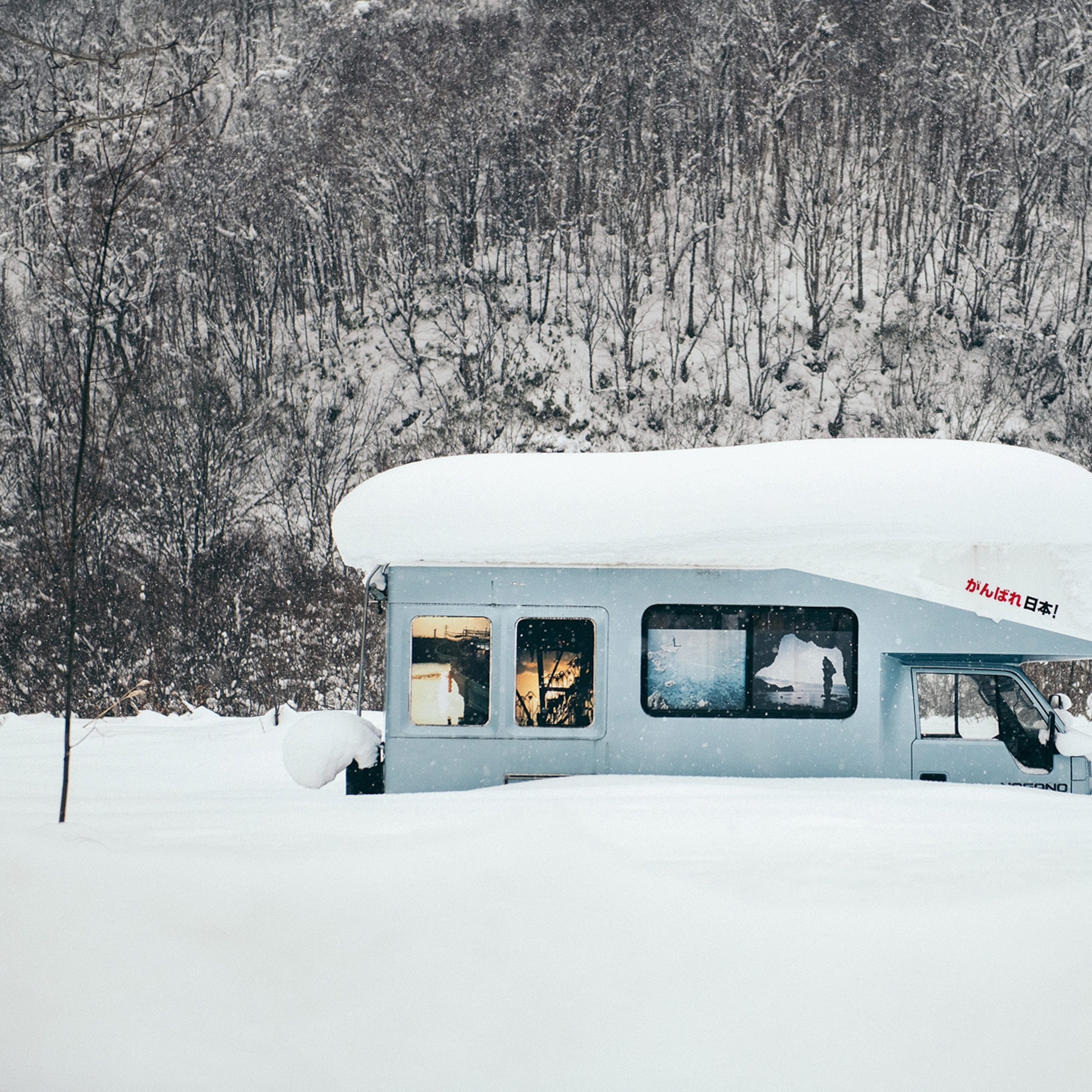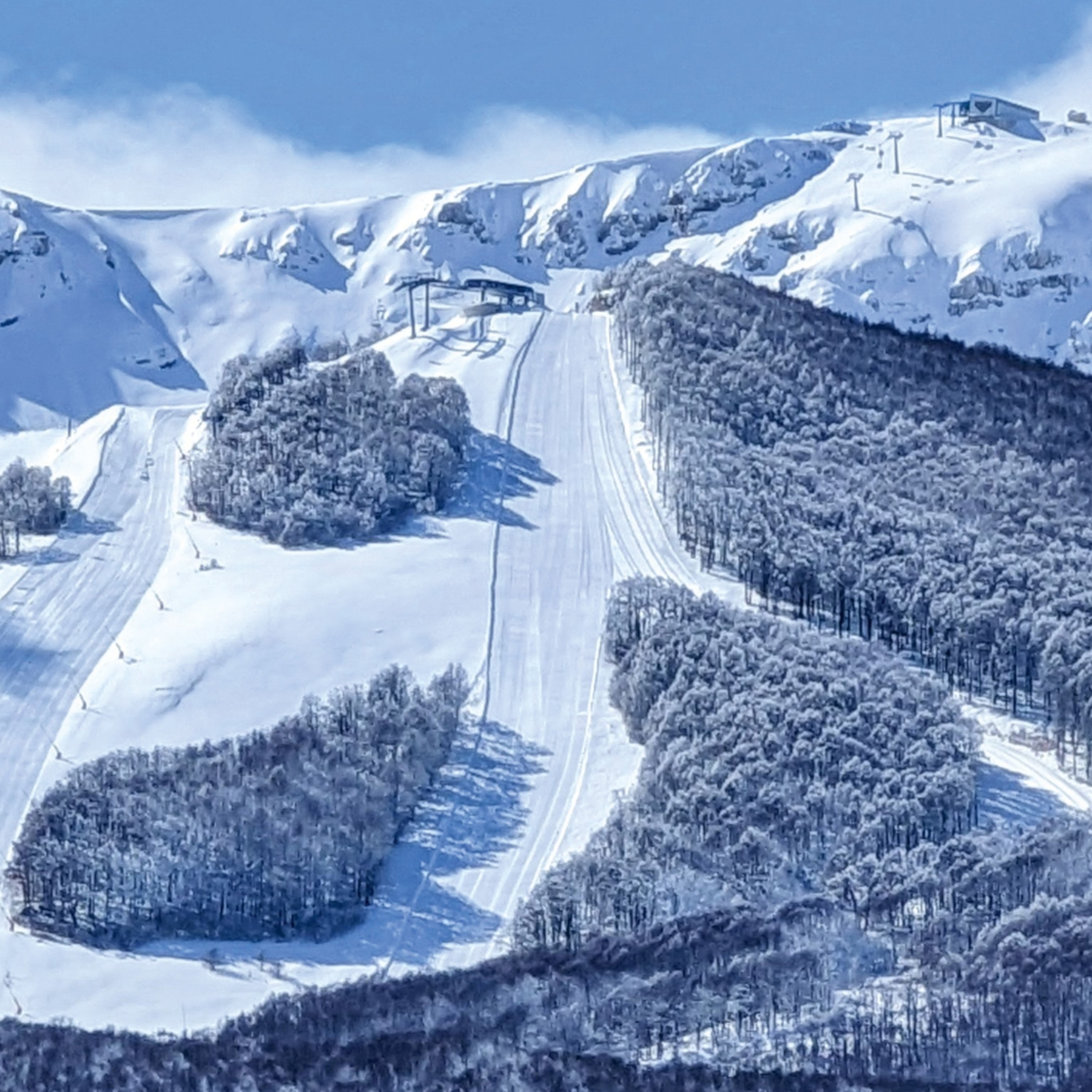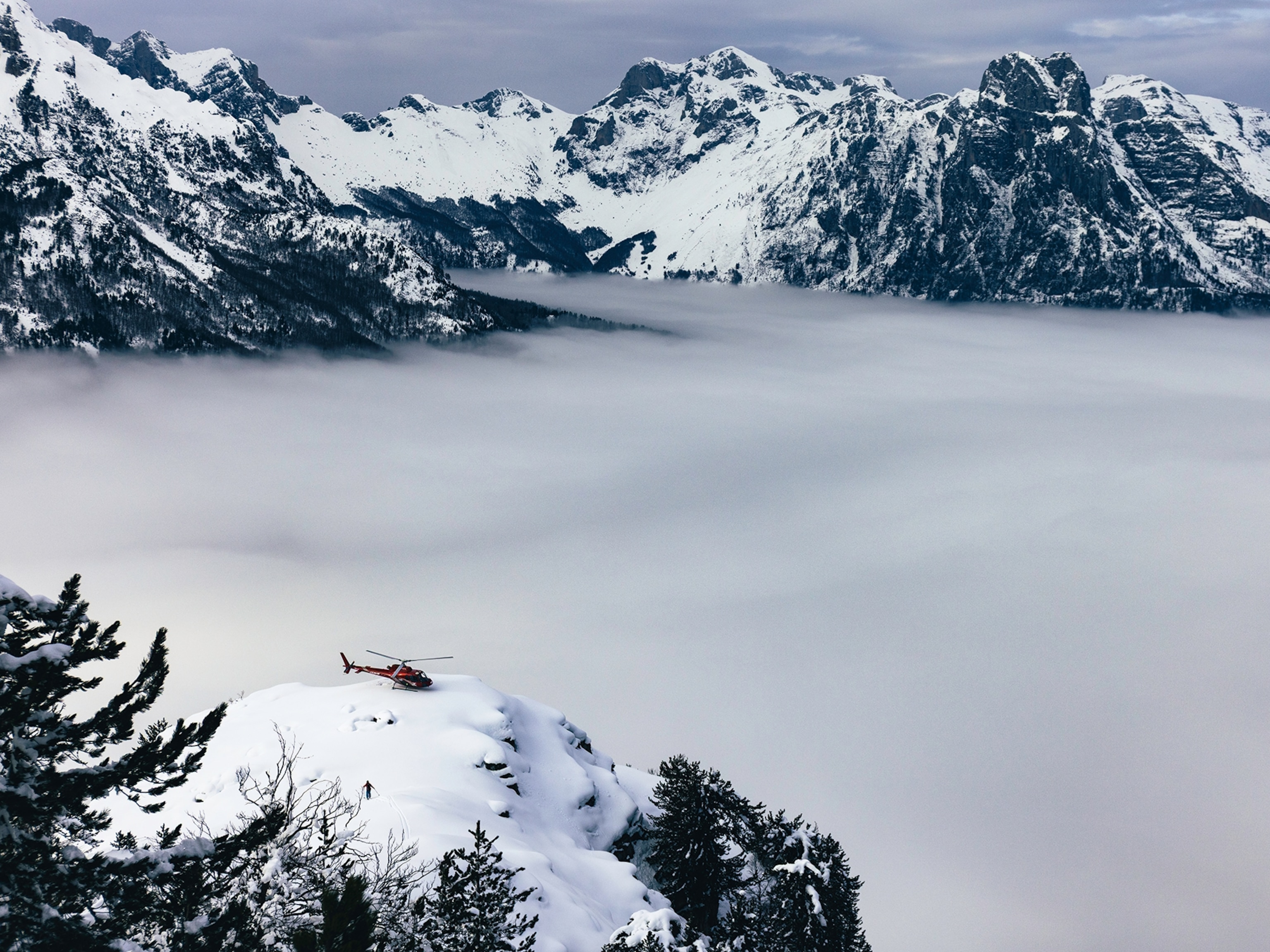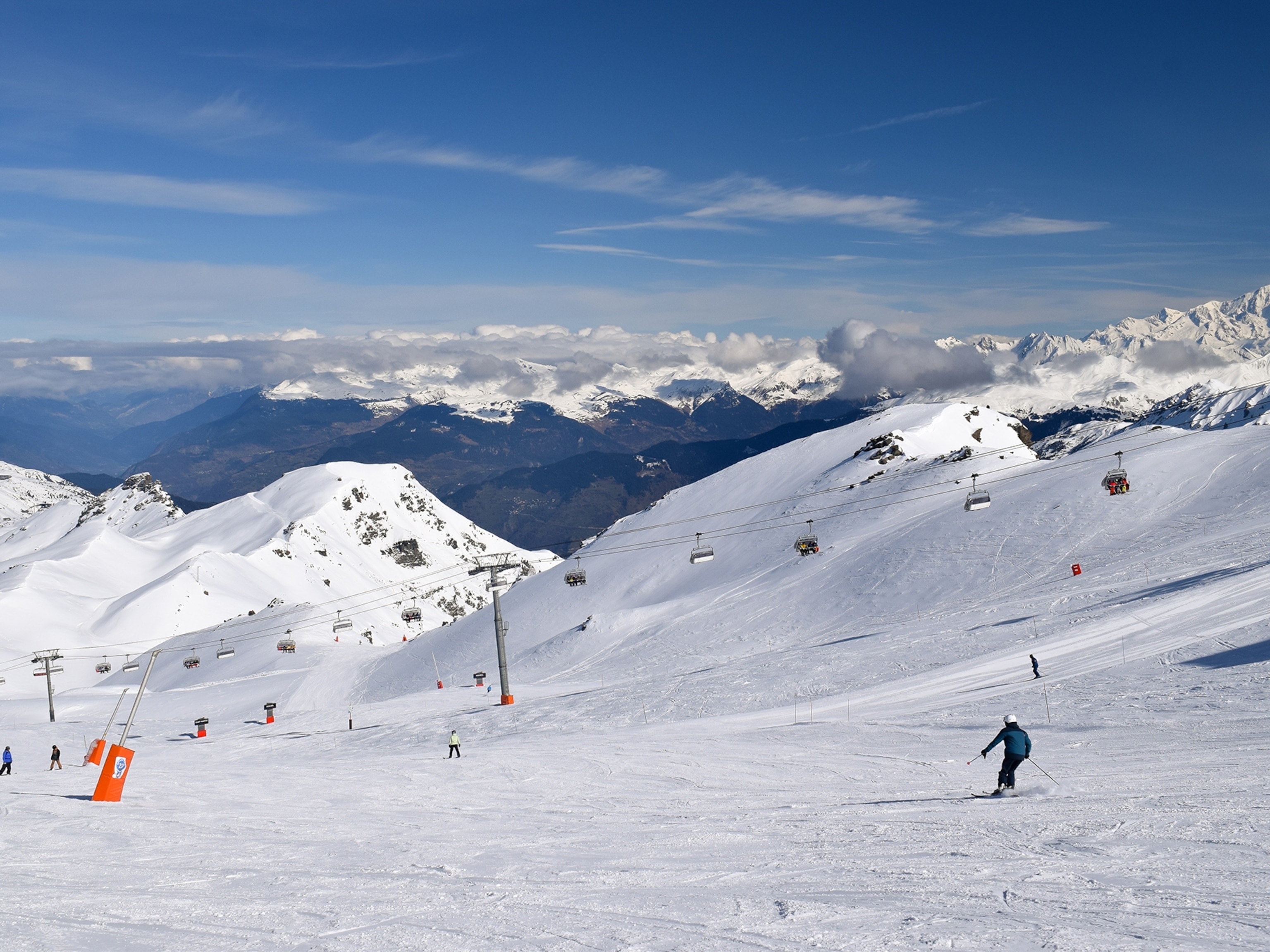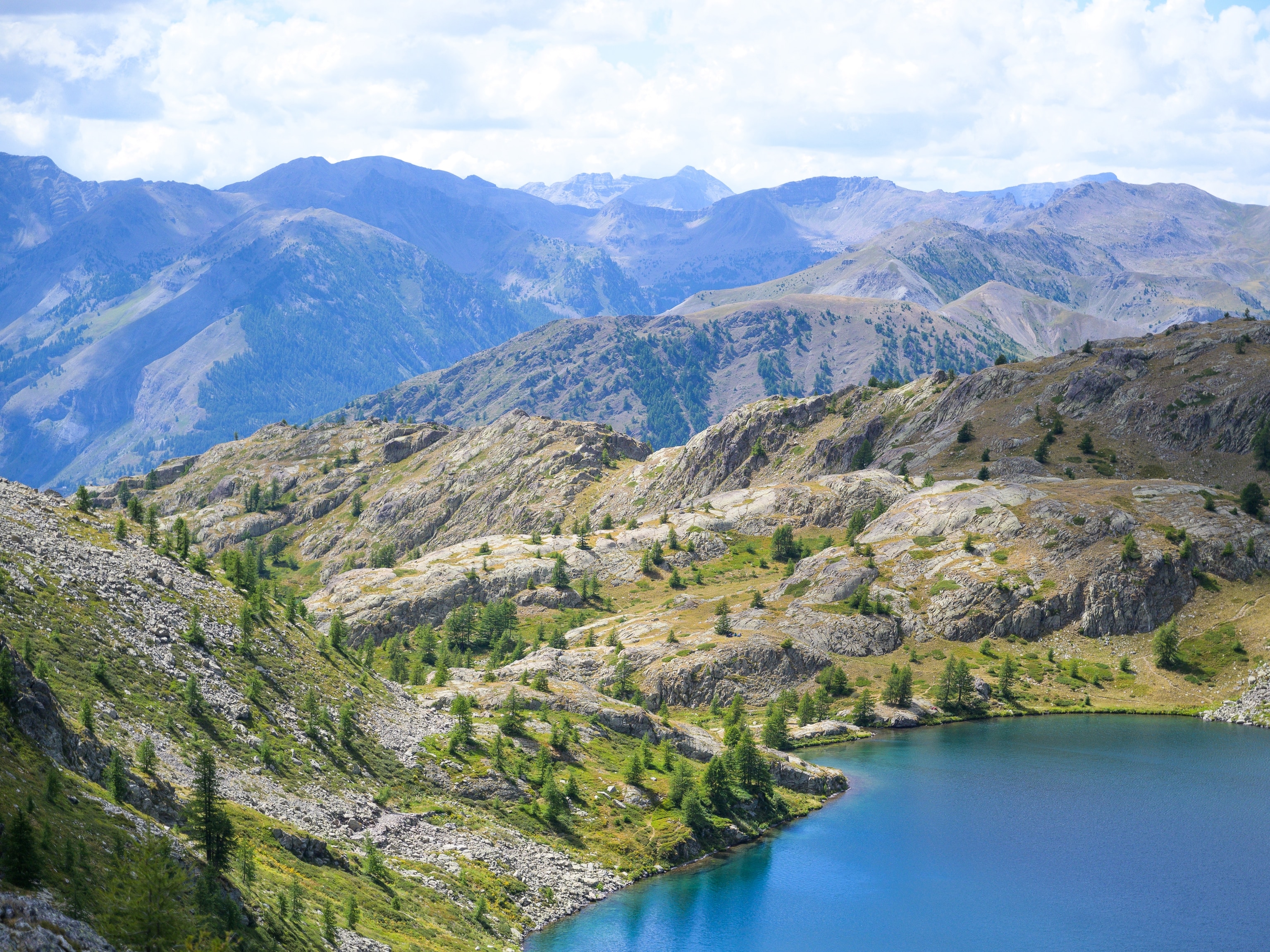Why Jimmy Chin Takes Pictures While Climbing and Skiing Mountains
How a kid from Minnesota found Taoism, skied Everest, and made the year's breakout adventure documentary.
JACKSON, Wyoming — At the beginning of last winter I got a call from Jimmy Chin asking if I wanted to join him for a secret project. "Kit and I are going to try to ski the Grand Traverse," he said.
Let me just point out a few things. By Kit, he means Kit Deslauriers, the first person to ski the Seven Summits, the tallest mountain on each continent. And she and Chin are two of only a handful of people on the planet who've skied off the summit of Mount Everest. So when they invite you on a "secret project" your sphincter tends to tighten a little bit. I'm just saying.
The objective, as Chin explained, was to ski the most iconic peaks in the heart of the Tetons in an epic four-day push. We'd start at the south end of the range and work our way north, climbing and skiing our way up and down nine different peaks, spanning 12 miles and 20,000 vertical feet of some of the most rugged terrain in the lower 48. We'd be entirely self-supported, schlepping all our own gear and bivouacking in the saddles between the peaks.
From the warmth of my living room in New Hampshire, it sounded doable. With good weather and the right snow conditions, an insanely fit and motivated team with the right mix of skills—and a hefty dose of luck—might just pull off what Chin was calling "a last great problem of North American ski mountaineering."
Then again, the Grand Ski Traverse has been looming over Jackson for decades, and I had to wonder why it had never even been attempted. After all, the town is home to some of the best skiers in the country, including the grandfather of ski mountaineering himself, Wild Bill Briggs, who basically invented extreme skiing when he slid from the summit of the Grand Teton in 1971.
Since then, just about every skiable line in the range has been descended at one point or another, but for some reason no one's ever tried to ski all of the Tetons' most iconic peaks in one epic journey. Still, since mountain athletes are notorious for scooping each other's prize objectives, we vowed to keep our plan secret so that no one would try to beat us to the punch.
In the past, it had usually been me calling Chin and asking if he wanted to team up on my latest scheme to explore some obscure mountain range. There was the "Hey do you want to go climb seaside cliffs in Oman?" phone call a few years ago. And then there was the one that began "Hey, want to climb some sandstone towers in Chad?"
Following the unwritten climbers' code of always at least pretending to be totally unflappable, I answered casually, "Sounds rad, dude. When should I come out?" But inside, I was thinking, Worst case, I can always fake an injury.
Epic Career Moment
At 41, Chin is having an epic moment. Not the kind of epic moment he's generally used to—not an adrenaline-infused, high-altitude ski line or a heart-stopping ascent of a sheer granite wall. Rather he's having an epic career moment.
Over the past two decades, he has documented a slew of headline-grabbing adventures. Of course, I'm not a completely objective observer, since I've accompanied him on some of these journeys. (Full disclosure: We're both sponsored athletes for the North Face, which helped make several of these trips possible.)
Be that as it may, consider the Chin résumé: He has skied and climbed his way around the world, leading or participating in expeditions to China, Pakistan, Nepal, India, Tanzania, Chad, Mali, South Africa, Borneo, and Argentina, among other places. He was part of the team that searched for—and found—the remote birthing ground of the rare Tibetan antelope. He documented Alex Honnold's stunning rope-free climbs in Yosemite. And then there was that ski descent down the world's tallest mountain.
But the crown jewel in his oeuvre—and the project that has thrust him beyond the adventure world into the media limelight—is Meru, a documentary film he's spent the past seven years making, which tells the story of his attempts, along with Conrad Anker and Renan Ozturk, to climb the Shark's Fin, a mile-high fang of rock and ice jutting from the side of Mount Meru, a 20,700-foot peak in northern India that, according to Hindu tradition, is the center of the universe.
The film depicts the hardships the three have to overcome just to get onto the mountain. Ozturk suffers a near-fatal head injury. Chin barely survives an avalanche, and Anker struggles to deal with the death of his best friend. But it also reveals the three friends' loyalty and commitment to each other, and their unflagging obsession with climbing a peak that many of their peers thought was impossible.
Well-made mountaineering films usually have their moment within the rock-and-ice community and then fade into the "special interest" inventories of video libraries. But Meru has resonated beyond the climbing community. It won the audience award for a U.S. documentary at the Sundance Film Festival in January and opens in theaters on Friday. Already, there are whispers of a possible Oscar nomination.
From Mao to Mankato
The story of how Chin found his path begins in the 1940s during China's Communist revolution. Chin's parents were swept up in the the mass exodus of Nationalist Party sympathizers who fled to Taiwan when Mao Zedong established the People's Republic of China in 1949.
In 1962 they immigrated separately to the U.S., and both landed in the library studies program at Vanderbilt University. Ideologically, they would have been an unlikely pair in China, but their common history as refugees drew them together.
Frank Chin came from a staunchly conservative military family from Wenzhou, in southern China, and Yen Yen's family, from Harbin in the north, was ultraprogressive. The Chins eventually settled in Mankato, Minnesota, where they both became librarians at Minnesota State University. Chin's sister, Grace, was born in 1967, and Xiao Pung (Mandarin for "Chubbs" -- Chin’s family nickname), arrived in 1973.
By age three, Chin was playing classical violin, practicing martial arts, and speaking English and Mandarin. By five, he was competing in swimming and tae kwon do, winning nearly every match he entered. One day when he was six, Chin came home from a particularly grueling tae kwon do practice after a snowstorm. His father was waiting for him at the end of their long driveway, which was covered by a foot of snow. "He didn't say anything and just handed me the shovel," recounts Chin. "He trained me by crushing me."
The Chins were intent that their children would know their heritage, and each summer the family would travel to Taiwan, where their son was immersed in a culture deeply infused with the principles of Taoism and Confucianism. He spent long days in the classroom hunched over his calligraphy brush working diligently to master the thousands of characters that make up one of the world's oldest written languages.
When Grace and Jimmy weren't in class studying Mandarin, the Chins toured the country and visited relatives. "I loved going to the Chiang Kai Shek Memorial in Taipei to watch all the old Chinese people doing tai chi and practicing kung fu," recalls Chin. "The monument was made of white marble, and it was beautiful. Sometimes my dad and I would practice with them."
Whatever the endeavor—calligraphy, academics, or athletics—the unwavering mantra in the Chin household was push harder, accomplish more. "Dad's philosophy was that whatever you did, it wasn't good enough," says Grace, "because obviously you could try harder and do even better."
Mount Kato was where Chin could escape from the pressures of his regimented existence, a place where he could run free.
Saturdays were reserved for swimming and martial arts competitions, followed by orchestra training. On Sundays in the winter, if he'd toed the line all week, his parents would let him go to Mount Kato, a tiny ski area only a few miles from their home. With only 240 feet of vertical it's more of a hill than a mountain, but Mount Kato was where Chin could escape from the pressures of his regimented existence, a place where he could run free—as fast as his skis would carry him.
One day when Chin was 14, he called Grace and asked her to come pick him up because he'd hurt himself skiing. When she pulled up to the mountain, Grace was horrified to discover that the minor injury he'd mentioned on the phone was actually a broken leg. "He was ranting and raving, but not about his leg," recounts Grace. "He was so mad because he'd broken one of his skis, and he insisted that I take him to the ski shop before the hospital."
As often happens when a child is put under too much pressure by an overbearing parent, Chin eventually rebelled. In middle school he was stealing his parents' car in the middle of the night to party with his friends. "I had a serious issue with authority," he says. The showdowns with his father—and sometimes the local police—escalated until his mother decided to ship Chin off to Shattuck-St. Mary's, an elite Episcopal boarding school in Faribault, Minnesota.
For 130 years, Shattuck had been famous for its Crack Squad—one of the oldest, most decorated military drill teams in the country. The squad was essentially a secret society run entirely by students. "The first time I saw their 45-minute drill executed without a single command, I was mesmerized," says Chin. "As a kid brought up to be a multidisciplinary perfectionist, the squad was totally irresistible."
By his junior year, Chin was captain of the squad, only the second time in the group's history the honor had been given to a nonsenior. "He had this way of gaining your confidence and trust," says Dan Fleak, a fellow Squaddie who was a year ahead of Jimmy. "He never demanded respect—rather showed that he deserved it through his actions."
But as popular as he was with the students, Chin had ongoing issues with authority that frequently put him at odds with the school's administration. At the beginning of senior year, he was caught with a girl in his room. It was the kind of offense that normally warranted a brief suspension, but the headmaster decided to expel him.
"The expulsion was earth-shattering," says Chin, "especially for my parents." He'd been a straight-A student, a black-belt martial artist, and all-star athlete with a keen interest in business and the law. He'd expected to apply to Harvard, Princeton, and Stanford. Then suddenly his life veered in a new and unexpected direction.
Chin enrolled in a more liberal prep school and fell in with a group of beatniks with whom he started rock climbing and smoking pot. "Getting kicked out of Shattuck had a silver lining," says Chin, "because it finally released all the pressure that had been building up inside of me since I was a little kid. For the first time in my life I was able to chill out."
Later, at Carleton College in Northfield, Minnesota, Chin majored in international relations. In a comparative religions seminar, he was introduced to the Tao Te Ching and the I Ching, ancient Chinese texts that form the religious and philosophical basis for Taoism. "These books spoke to me," he says, "probably because of the Confucianism I learned from my dad and all the time I spent in Taiwan studying Chinese as a youth. Taoism taught me to focus on the process and not to be attached to preconceived ideas of what I thought the outcome should be."
The Calculus of Risk
"Getting the rope up there is your job, Scrappy," Chin says to me, sharing a knowing look with Kit as they snicker conspiratorially. We're staring up at what they call the Spooky Face on Nez Perce. It's the first face we've planned to ski on our traverse.
To get here, we spent the morning trudging under 60-pound packs loaded with four days' worth of food plus climbing, skiing, and camping gear. Our plan had been to reconnoiter Nez Perce this afternoon and then establish a high camp from which to explore the best possible descents. But the Spooky Face looks more like a serious alpine climb than a ski descent—a 2,000-foot rock wall with a few token patches of snow. And suddenly, exactly what we're up against sinks in, because this nightmare is just one of the nine peaks on the traverse, and even an animal like Chin wouldn't try to ski it in its current condition.
We always knew that pulling off the Grand Ski Traverse would depend on the conditions, and this winter there hasn't been enough snowfall to cover this face. But the key to success—and survival—as a ski mountaineer is to know when to push and when to back off.
So we decide to see how much of the project we can complete and turn instead toward the middle and highest part of the range. By late the next day, we find ourselves standing on the summit of the Grand Teton. The line I'm staring down between my skis is the exact route pioneered by Bill Briggs more than 40 years ago, and I silently tip my hat as I stare down at Jackson Hole, where he still lives to this day. This ski run is almost as steep as the Spooky Face, but since it's at a higher elevation there's a lot more snow, and the conditions are close to ideal.
"Don't forget," says Chin, as he slides over the edge, "don't fall."
This time he's not teasing or exaggerating. It's a simple fact. If one of us were to blow a turn, we might be able to self-arrest with the ice picks attached to the grips of our ski poles, but there's a reason they call this ski mountaineering—we're skiing down a 50-degree incline that's more suited to alpine climbing. That doesn't stop Chin from swooping down onto this hanging panel of snow high on the Grand as if he were at the resort, and he deftly jump turns his way through an obstacle course of boulders jutting from the wind-blasted slope.
The only time I've ever seen Chin in a position where he couldn't get the shot was during our descent of Lhotse Face on Everest.Kit DesLauriers, Ski mountaineer
After 15 perfectly scribed turns, he traverses onto a rib of snow and pulls out his camera. But instead of waving us on, he holds his poles up in a X-pattern. The summit is coming in and out of the clouds, and he wants us to wait for the right light to get pictures of us coming down. (This is one of the curses of skiing with a filmmaker-photographer—the light is always key.) As Kit and I fidget anxiously on the summit, our ski tips hanging over the lip of a 7,000-vertical-foot ski run, I ask her about skiing Everest with Chin and her husband, Rob, in 2007.
"It's funny after nine years what sticks in your mind," says Kit. "By far the most memorable part of the whole experience was our descent of the Lhotse Face." The Lhotse Face is a mile-high wall of 50-degree, hard, blue ice that lies between 21,000 and 26,000 feet on Everest's south side. At the time, it had never been skied before.
"As we dropped in off the South Col, it just kept getting steeper and steeper. We were all so focused on finding our own line that we got split up, and we each ended up on these different tendrils of wind-blasted snow." Every once in a while, she explained, she'd catch a view of Chin, but he never seemed to be taking photos. "I knew what we were doing was historic, and I really wanted to have some documentation," she says, "so I yelled over to Jimmy and asked him if he wanted to get some shots."
Chin told Kit to wait and then skied down a ways to get in position. Kit saw him take off his pack and remove his camera, but then he immediately put it back on and kept going. Her legs began to shake as she struggled to hold an edge, but he just kept skiing, until finally she realized that he wasn't stopping. When she caught up with him a thousand feet below in the middle of the face, she asked him why he hadn't taken any photos. "I couldn't," Kit recalls him saying. "When I lifted the camera to my eye, I felt like I might lose it."
"If any of us had fallen, it would have been deadly," says Kit. "I remember feeling bizarrely assured that I wasn't the only one who was thinking about the exposure and the consequences of a mistake. To this day I think it's the only time I've ever seen Chin in a position so extreme that he couldn't get the shot."
Extreme Mountain Photography 101
It was in a similarly exposed position that Chin took his first professional photo. Sitting in a portaledge one evening on the side of Yosemite's El Capitan, Brady Robinson, Chin's climbing partner and fellow Minnesotan, showed him how to adjust the focal length, f-stop, and depth of field on his Nikon FM. A few days later, at a final bivouac on the summit, the sun bathed their campsite in early morning light, and Chin grabbed the camera and snapped a few frames of his sleeping friend. One photo turned out to be a gem, and Robinson, an aspiring adventure photographer, sold it to gear maker Mountain Hardwear for $500, and gave the money to Chin.
At the end of the season, Chin called his parents to tell them that instead of applying to law or business school—as he'd promised he would after taking a year off to climb—he'd decided to go on an expedition to Pakistan. It wasn't welcome news. "It was the last time I would speak to either of them for a year," he says.
As enthusiastic as he was to climb in the Himalaya, Chin didn't know the first thing about launching an international expedition. So he showed up one Monday morning at the gallery of the late adventure photographer Galen Rowell, who'd recently returned from Pakistan's Charakusa Valley.
The receptionist told him Rowell was busy and offered him a seat in the waiting room. Rowell never appeared that day, and Chin spent the entire week returning to the waiting room until Friday afternoon, when Rowell finally walked up and introduced himself. "I've got to give you credit for your perseverance," he said.
Rowell spent the next hour giving Chin a personal slide show of his recent expedition. Before they parted, he handed Chin a picture of the valley's most striking unclimbed tower. "Make sure you take a camera," he said.
A year later at the winter outdoor retailer convention—the outdoor community's annual gear trade show in Salt Lake City—Chin's photos of Brady's and his first ascent of that tower covered the Mountain Hardwear booth.
During that convention, a mutual friend introduced Chin to Conrad Anker, one of America's leading alpinists. Anker had recently returned from an expedition in Tibet where he narrowly survived an avalanche that claimed the life of his best friend, Alex Lowe. He still had scars on his face from being tossed hundreds of feet in the avalanche, and he was an emotional wreck, but he took an instant liking to Jimmy.
"My first impression was of a guy with charisma and intelligence but a complete lack of ego," says Anker. "He was pretty refreshing compared to some of the people you meet in the climbing world."
Soon the pair were inseparable, and under Anker's tutelage, Chin quickly developed into an uncommonly strong climber and, more important, into one of those rare individuals who also has the talent and work ethic to document the climbing experience with his camera. And though Chin didn't realize it at first, Anker was training his young apprentice to help him tackle a climb he'd been dreaming about since he was a young grasshopper himself—a last great problem of Himalaya climbing called the Shark's Fin on Meru.
A few year's later, Anker orchestrated what turned out to be Chin's big break. Anker and Rowell, along with Rick Ridgeway, a member of the first American expedition to climb K2 in 1975, and filmmaker David Breashears were planning a self-supported 300-mile trek across the Chang Tang Plateau in Tibet. The goal of this National Geographic-sponsored expedition was to cross one of the most remote and inhospitable high-altitude deserts in the world in search of the birthing ground of the mysterious Tibetan antelope. When Breashears had to drop out, Anker suggested Chin as his replacement, even though Chin had never picked up a video camera. Chin's fluency in Chinese and his knowledge of Chinese culture and customs proved instrumental in navigating all the red tape in China—and he nailed the assignment.
On the strength of Chin's performance in Tibet, Breashears hired him a year later to help shoot his Everest IMAX movie, during which Chin summited alongside Ed Viesturs. Then Viesturs hired Chin to shoot him on Cho Oyu and Annapurna, the last two peaks in his quest to become the first American to summit all 14 of the 8,000-meter peaks.
Chin's career had taken off.
The New Chin Household
On a fine spring evening toward the end of my stay in the Tetons, I arrive at the Chin household, on the west bank of the Snake River, to check in with Chin and to meet his wife, Chai Vasarhelyi. Chai and their 18-month-old daughter, Marina, have just flown out from New York City, where they live. Jimmy and Chai maintain separate residences in Jackson and Manhattan respectively, necessitating frequent plane trips back and forth across the country.
Chai greets me at the door. She's tall and thin with piercing dark eyes. Like her husband, she's also a documentary filmmaker. They met at a young entrepreneurs conference three years ago and a few months later decided to team up on directing Meru, which Chin had been struggling to finish. Their relationship grew out of the long nights they spent in the editing room.
Marina totters up, and Chin tosses her into the air. She squeals with delight, but a moment later Winnie, their Chinese nanny, who speaks only Mandarin, is wagging her finger in his face.
"Winnie pretty much runs the show around here," says Chin, handing his daughter to her before leading me to the back of the house, where a giant picture window reveals a panoramic view of the mountain range where we've been tromping around all season. A long stone hearth, covered in climbing and ski gear, is adjacent to the window, and on its end sits a dog-eared copy of the I Ching. Chin refers to it the way a Christian might a Bible and always has a copy handy.
It's been almost four years since the team summited Meru, and Chin hasn't been on a major expedition since. Thumbing through the I Ching, I wonder out loud if parenthood has anything to do with his current hiatus from Himalayan climbing.
"Becoming a parent has changed the risk calculus for me," he says. "But it might be age too, and seeing a lot of friends die in the mountains. Will I take the same risks I took in my 20s? Probably not, but I will always push myself in the mountains."
Taking What the Mountains Give
In the end our attempt to ski the Grand Traverse was doomed by Mother Nature. The mountains never got enough snow to allow us to complete Chin's dream linkup. But we took what the mountains gave us, and over the course of several attempts we managed to ski the five main summits—South, Middle, Grand, Owen, and Teewinot.
We also succeeded in documenting a season of ski mountaineering in a way that perhaps no one has done before. Chin has taken thousands of photos and shot hours of video. But it strikes me that the one thing we haven't documented is the arduous process that he goes through every day he's in the mountains: the predawn starts, the miles of grinding uphill under heavy loads of photo and video gear, the endless wrestling with bricklike cameras, the frozen fingers and frenetic race against dying batteries—all while worrying whether he could be pushing himself harder.
He doesn't say it, but it's clear the Chin mantra is still pulsing in his brain.
Although we failed to complete the secret project, Chin is surprisingly unperturbed. There will be other ski seasons in the Tetons, and he's got a long list of secret projects. It's an attitude tempered by years of experience, perhaps best expressed by one of his favorite Chinese proverbs: "Trees that don't bend with the wind, won't last the storm."
Mark Synnott is a writer and expedition guide based in New Hampshire. Follow him on Instagram.
